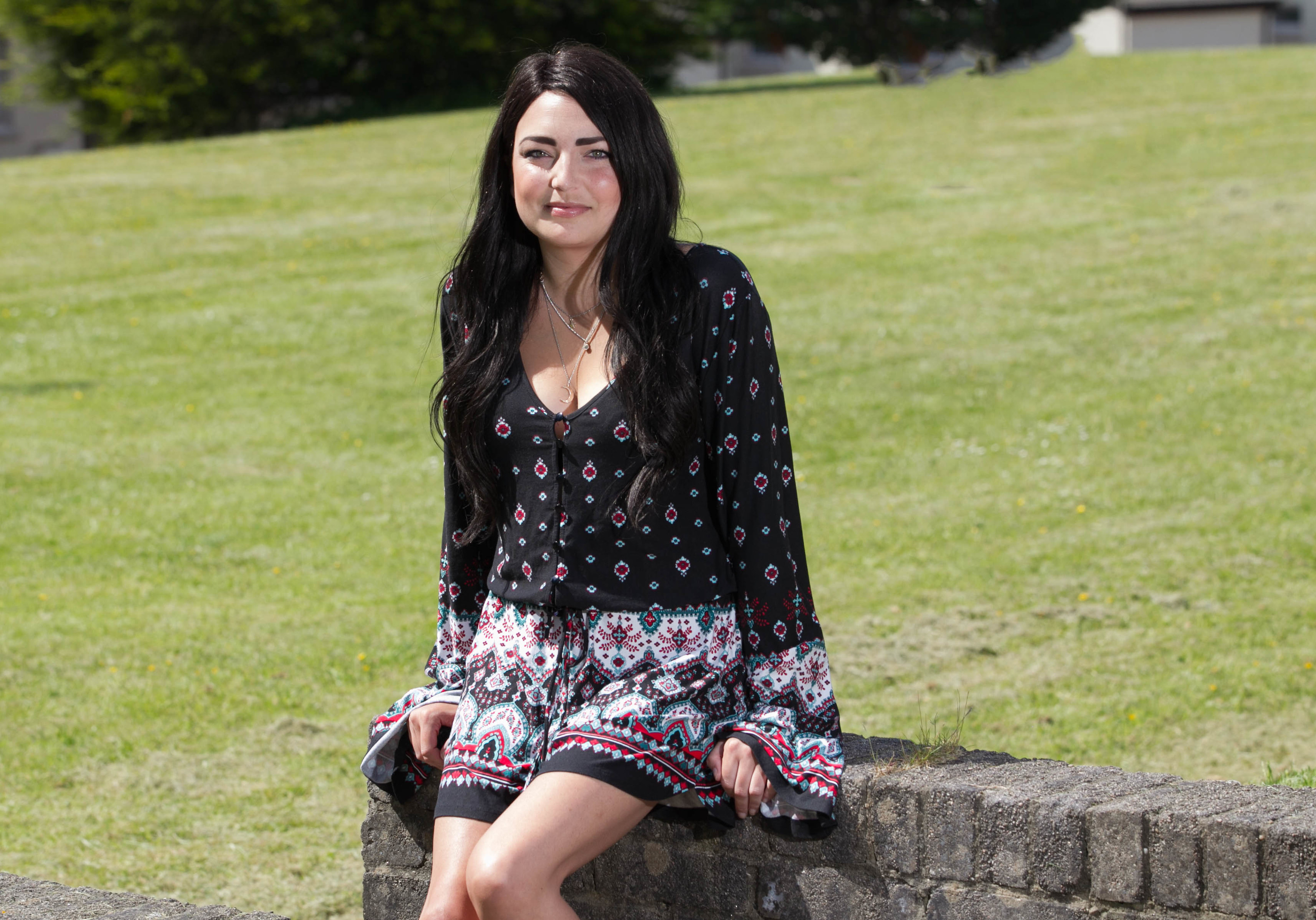
AT the age of 30, Natalie Wood should be looking back on happy memories and forward to a rosy future.
But Natalie, from Helensburgh, can do neither.
Instead, she says simply: “I don’t know what it’s like to be normal.”
Natalie has an autoimmune condition called hypopara, something so rare she admits nine out of 10 doctors she sees don’t know about it.
It causes excruciating cramps and spasms and has hospitalised Natalie so often she has lost count.
Now, though, there is some light at the end of the tunnel with a drug regime that’s controlling her symptoms.
Natalie was just six when she had the diagnosis although it’s been with her since birth.
“My mum had been trying to get me medical help since I was a baby,” said Natalie.
“She’d thought I was deaf because she’d be shouting at me and I’d just be staring into space.
“There were lots of things she couldn’t put her finger on.
“Then when I was five I started having grand mal seizures 10 or more times a day. I was on the floor more that I was standing up.
“Any excitement would trigger one. I couldn’t run, play, go on bouncy castles, have fun basically.”
Natalie spent so much time in Glasgow’s Yorkhill Hospital she had her own teacher there.
“When I was little I practically lived there and since then I’ve been to other hospitals monthly, sometimes weekly. I feel like it’s my other home and I know that’s bizarre.”
Hypopara is a parathyroid condition involving glands in the neck which are supposed to regulate the body’s crucial calcium levels.
When Natalie’s incredibly painful symptoms kick in, she needs to head to A&E for urgent admission to get infusions of either calcium or magnesium to restore balance.
“The type I have is a version called polyglandular type 1,” says Natalie.
“I was born with the autoimmune condition that attacked my parathyroid glands and killed them.
“I always look on this as being as if my body gets really angry and attacks other bits of itself.”
The impact on Natalie’s life has been immense. Despite being bright, bubbly and articulate, her constant attacks and hospital stays hit her education and thwarted any chance of getting the teaching or medical job she’d have loved.
Natalie had long known of medications available in other countries that helped patients.
And a couple of years ago a change in clinical guidance meant she was able to start getting injections of a drug which is a synthetic parathyroid hormone.
“I’d heard of these people abroad who had the medication from childhood and they’ve been able to have full educations and careers.
“But I can’t be bitter. I’m not cured, but since I’ve been on the drug it’s changed my life dramatically. It’s cut down on my hospital admissions a lot and I just have to be positive.”
For more information, visit www.hypopara.org.uk
READ MORE
Dying mum writes heartbreaking letter to Shona Robison, asking for more time
MND Scotland helps motor neurone disease patient’s son to raise awareness via cycle challenge

Enjoy the convenience of having The Sunday Post delivered as a digital ePaper straight to your smartphone, tablet or computer.
Subscribe for only £5.49 a month and enjoy all the benefits of the printed paper as a digital replica.
Subscribe